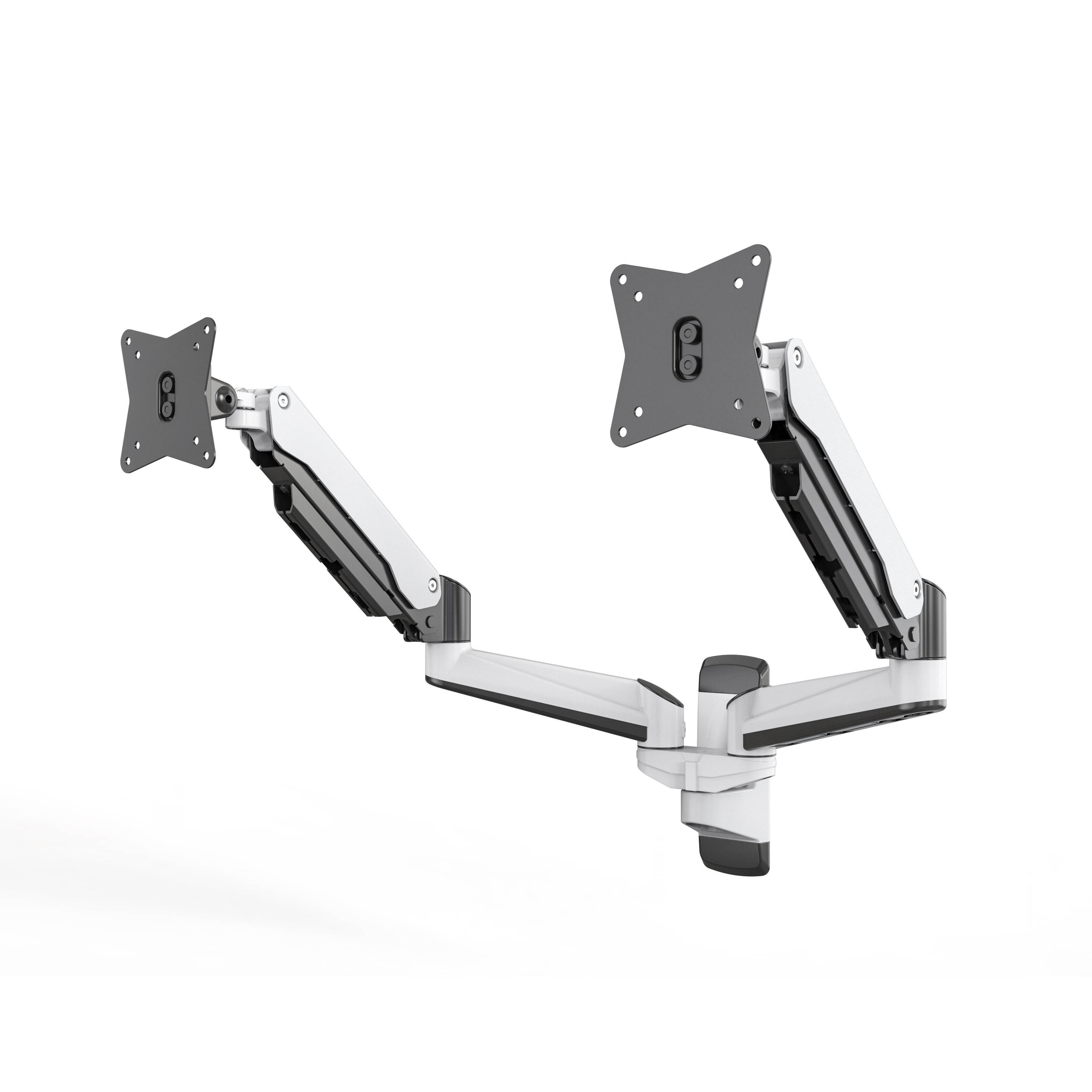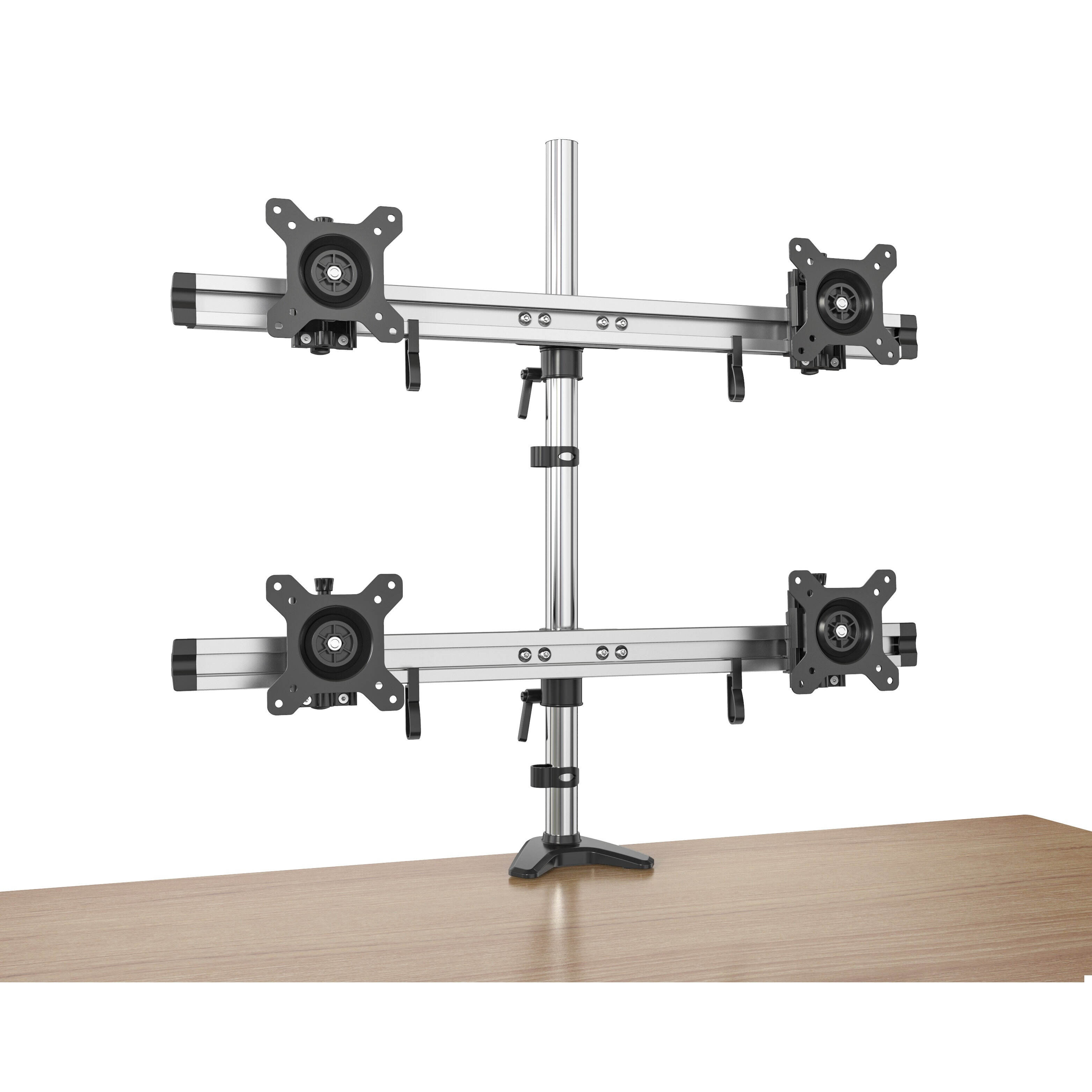Redefining Workplace Comfort with Modern Ergonomics
As hybrid and remote work environments continue to shape modern offices, there is increasing emphasis on employee well-being and workspace optimization. Among the many ergonomic upgrades companies can implement, monitor arms have emerged as one of the most practical yet impactful solutions. Unlike static monitor stands or desks that force users into a fixed posture, monitor arms offer dynamic adjustability that enhances comfort and productivity throughout the day.
Used across industries, monitor arms help transform a conventional desk into a healthier, more efficient workspace. Their ability to improve posture, reduce strain, and create more space has led to growing adoption among office professionals seeking long-term benefits for both their health and workflow.
Enhanced Ergonomics and Health Outcomes
Promoting Better Posture
Monitor arms encourage users to maintain an upright sitting posture by allowing the screen to be positioned at eye level. Unlike traditional fixed monitors, which often require users to tilt their heads downward, monitor arms reduce strain on the neck and shoulders. When used correctly, this improved posture can minimize the risk of musculoskeletal disorders over time.
Many employees unconsciously adopt poor sitting habits due to poorly placed screens. Monitor arms correct this by enabling precise height and tilt adjustments, creating a healthier viewing angle that promotes spinal alignment and reduces fatigue over prolonged work sessions.
Reducing Eye and Neck Strain
Long hours in front of a screen can lead to digital eye strain, tension headaches, and cervical stiffness. Monitor arms help alleviate these problems by supporting optimal monitor distance and alignment. By adjusting the height and depth of the screen, users can reduce the need to squint or crane their necks forward, especially during detailed tasks like data entry or design work.
In addition, dual-monitor arms allow seamless alignment of multiple screens, preventing the constant side-to-side neck movements common in setups with uneven displays. This balanced visual field enhances user comfort and supports long-term health.

Improved Workspace Organization
Maximizing Desk Space
One of the most noticeable advantages of monitor arms is the freed-up desk space. By lifting monitors off the desk surface, users gain more room for notebooks, documents, or additional peripherals. This creates a cleaner, more minimalist work area that enhances focus and reduces clutter.
Monitor arms with cable management systems go one step further by hiding unsightly cords, adding to a sleek and efficient workstation. Whether in a corporate office or home setup, the space-saving benefits of monitor arms are both functional and aesthetically appealing.
Supporting Multi-Monitor Efficiency
For employees who rely on multiple screens for their work—such as developers, financial analysts, or content creators—monitor arms offer a seamless and customizable setup. Dual and triple monitor arms allow each screen to be positioned at the ideal angle, height, and distance, creating a unified workflow.
Instead of arranging monitors on static stands at varying heights, users can create a consistent visual line across all displays. This not only saves space but also boosts efficiency by minimizing unnecessary eye and head movements between screens.
Long-Term Productivity Gains
Supporting Daily Task Flexibility
Monitor arms allow users to quickly reposition their screens based on task requirements. From standing desk use to video conferencing and collaboration sessions, monitor arms enable seamless transitions between working styles. This flexibility reduces static sitting time and encourages movement, which is proven to support cognitive performance and energy levels throughout the day.
Adjustable monitor arms also help shared workstations cater to multiple users. With just a few movements, the monitor can be adjusted to fit different heights or viewing preferences—ideal for hot-desking environments and collaborative teams.
Reducing Workplace Discomfort and Absenteeism
Discomfort from poor posture or eye strain is one of the most common reasons for reduced employee productivity. Over time, this can lead to missed workdays or even chronic issues. By investing in monitor arms, companies can proactively address these concerns and reduce the risk of health-related absenteeism.
Creating ergonomic workspaces with monitor arms not only supports physical wellness but also communicates that employee health is a priority. This contributes to greater job satisfaction and a more engaged workforce in the long run.
Cost-Effective and Scalable Investment
Durable and Long-Lasting
High-quality monitor arms are built to last, often outliving the monitors they support. Their durable construction ensures smooth adjustability and load support for many years. Unlike other ergonomic investments that may require frequent replacement or maintenance, monitor arms provide consistent performance with minimal upkeep.
Given the rising cost of employee health care and turnover, the cost of monitor arms is relatively small. Yet the return on investment—measured in improved health, comfort, and productivity—is substantial.
Easy to Install and Scale Across Teams
Most monitor arms are designed for quick installation and broad compatibility. They attach easily to desks using clamps or grommets and are adjustable to support different screen sizes. This makes them an excellent solution for teams of any size, whether upgrading a single workstation or refitting an entire office.
Scalability is particularly valuable for growing companies. Once a standard monitor arm solution is selected, it can be rolled out across departments to ensure ergonomic consistency and visual uniformity throughout the workspace.
Environmental and Aesthetic Benefits
Supporting Sustainable Workspaces
Monitor arms contribute to sustainable office design by promoting long-term use of equipment. By extending the usable life of monitors through better handling and positioning, they reduce the frequency of replacements. Many models are also made from recyclable aluminum or steel, supporting green procurement initiatives.
In open-plan offices or co-working spaces, the clean lines and compact footprint of monitor arms help reduce visual clutter, creating a more pleasant and organized environment that reflects modern workplace values.
Enhancing Professional Appearance
In client-facing roles or remote meetings, the appearance of your workspace matters. Monitor arms contribute to a more polished and professional-looking desk setup. They help align monitors at eye level for better video angles and allow users to hide cables and accessories that might otherwise create distractions.
Whether you're presenting to clients or attending virtual conferences, a tidy, organized workspace supported by monitor arms can make a strong impression.
FAQ
What are monitor arms, and how do they work?
Monitor arms are adjustable mounting solutions that attach to desks or walls and hold computer monitors. They allow users to raise, tilt, swivel, and rotate their screens to achieve optimal ergonomic positioning.
Can monitor arms support multiple monitors?
Yes, there are dual and triple monitor arms designed specifically for multi-screen setups. These help align screens evenly and support a seamless workflow across multiple displays.
Do monitor arms help reduce back and neck pain?
By allowing monitors to be positioned at eye level and appropriate distance, monitor arms promote better posture and reduce strain on the neck and back. This can help prevent discomfort and long-term injury.
Are monitor arms compatible with any monitor or desk?
Most monitor arms support standard VESA mounts and work with a wide range of monitors. They can be installed on most desks using clamps or grommet bases, but it's important to check weight limits and compatibility before purchasing.




